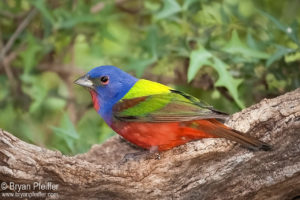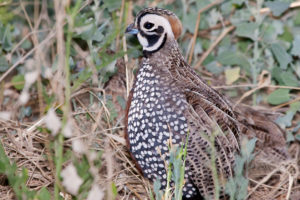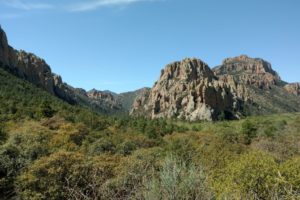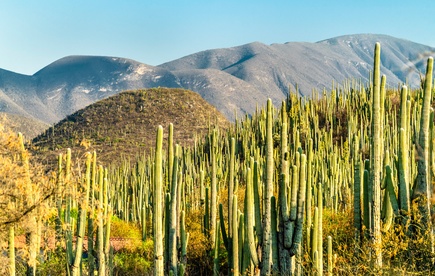Arizona's Second Spring - Birding the Sky Islands
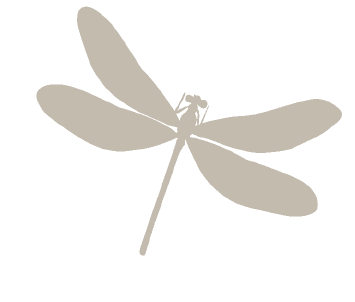
July 29 - August 6 , 2023
Price: $3500 | Single supplement: $450
7 participants max
M
agical, high-elevation "sky island" mountain ranges rise thousands of feet above the desert floor of Southeastern Arizona. Here, Greater Roadrunners and Vermilion Flycatchers dart among saguaro cacti and mesquite thickets in the low foothills, while Elegant Trogons and brilliant hummingbirds adorn the branches of montane forests above. Mexican Jay, Red-faced Warbler, Painted Redstart and a host of hummingbirds (Blue-throated Mountain-gem, Lucifer, Violet-crowned and more) enliven the beautiful landscape of the sky islands.
Plus, Arizona’s monsoon season is lush, green and birdy! Many species not seen in early spring are present in the summer, including Sulfur-bellied Flycatcher, Thick-billed Kingbird, Varied Bunting, as well as some special hummingbirds - Plain-capped Starthroat, Mexican Violetear, Berryline and White-eared Hummingbirds.
This trip loops through Portal, Arizona, the gateway to the famed Chiricahua Mountains, then continues through the Huachuca Mountains and Madera Canyon. Along the way, we'll experience diverse ecosystems from the Sonoran Desert to the sycamore-lined creeks of Ramsey Canyon.
And you never know what else will show up in Southeast Arizona: Ruddy Ground-Dove, Rufous-backed Robin, Golden-crowned Warbler are all possibilities, and there are sure to be surprises in store as well!
This flexible itinerary will include renowned lodges and classic birding destinations such as Cave Creek Ranch, Ash Canyon Bird Sanctuary, Ramsey Canyon, Madera Canyon, San Pedro River, Rustler Park, Saguaro National Park, and more.
Additional Information
Pacing and Expectations: The daily travel schedule on our birding tour varies to account for weather, bird species and habitat. We will often want to be out birding very early in the morning—we may have dawn breakfasts or take a box breakfast into the field.
Clothing: Pack light field clothing of neutral colors. Bring several pairs of long pants and comfortable, light, airy shirts. Long-sleeved (relaxed fit) shirts are useful for protection from the sun, as is a light hat or cap. Though rain is unlikely, do pack a rain jacket or small umbrella. Be sure to have a pair of comfortable walking shoes or hiking boots, plus a second pair of tennis shoes or sandals. You may want more casual clothing for traveling or dinners. A small washcloth and handkerchiefs will be helpful.
Equipment: Bring a pair of binoculars, a field guide and a camera with extra batteries. The guides will carry spotting scopes. Pack sunglasses and sunscreen, a small flashlight or headlamp, a small alarm clock (a smartphone will work), insect repellent, a small daypack, and hiking poles (optional).
Health Considerations: Please consult your physician before the trip for any concerns relating to travel and exertion at high altitudes. As for foods, all meals at the different lodges are perfectly safe to eat, and we will have easy access to potable water throughout the journey.
Participants should be able to hike on moderate, uneven, and sometimes steep terrain, up to 4 miles per day. Most days will have very little, if any, strenuous walking.
Temperatures: The Sky Island regions we'll be visiting are much milder in temperature than the surrounding desert lowlands. That said, we'll be encountering a wide range of temperatures. Mornings in the mountains may be as cool as 60 degrees, and the desert floor in Tucson may be closer to 100 degrees Fahrenheit. We will generally avoid birding in the mid-day heat, and prioritize morning and evenings when birds are most active.
We’ll be staying at "Holiday Inn equivalent" lodging throughout much of the trip. We selected our lodging to ensure clean and comfortable accommodations situated strategically near the heart of the birding hotspots we’ll be visiting.
Cave Creek Ranch and Santa Rita Lodge are smaller, high-quality lodges that regularly cater to birders, and offer terrific birding right from the doorstep.
We will typically have picnic breakfasts (including coffee) and lunches in the field each day, and we provide a range of options to accommodate preferences and dietary restrictions. Our dinners will typically be at restaurants back in town or at the lodge.
Chip Darmstadt is the "emeritus" executive director of the North Branch Nature Center and an avid birder and naturalist. Chip has led birding trips in the US and across the world with NBNC for the last two decades, observing over 2,000 bird species along the way. Arizona is a regular birding destination for Chip. When not guiding trips, Chip works on extending his streak of over 1,400 consecutive days of eBird checklists!
The trip cost includes:
- Pre-departure orientation gathering at NBNC
- Expert NBNC guide
- Use of shared spotting scopes
- All accommodations
- Entrance fees to parks
- All transportation in a private van
- Water
- All meals during the trip
The trip cost does not include:
- Airfare to and from Arizona
- Trip cancellation insurance
- Alcoholic beverages
- Extra hotel services
- Snacks
- Guide gratuities
Ready to go to Arizona?
Email [email protected] to get signed up.
Payment Schedule
- A $500 deposit is required to reserve your space on the trip.
- 50% of the trip balance will be due 6 months before the departure date.
- Single travelers must include the single supplement fee with this payment. Single rooms are limited on this itinerary, so please confirm with us that your request for a single room can be accommodated before sending payment.
- The remaining trip balance will be due 3 months before the departure date.
All payments can be made via check to: North Branch Nature Center, 713 Elm Street, Montpelier, VT 05602
Cancellation Policies
We understand that incidents and emergencies arise that may force you to cancel your trip. However, NBNC invests considerable time and, in many cases, non-refundable payments to lodges and local contractors to secure our rooms and programming. NBNC aims to be as flexible as possible in our refund policy, but a full refund of your payments may not be possible after the dates indicated. All cancellations must be made via email to NBNC.
-
Cancellation more than 180 days before the trip: Full refund of all payments.
-
Cancellation 90-180 days before the trip: Refund of any payments minus the $500 deposit. If your space is filled by another traveler, we will also refund your deposit.
-
Cancellation 30-90 days before the trip: No refund guaranteed. If your space is filled by another traveler, we will provide a full refund minus the $500 deposit.
-
Cancellation less than 30 days before the trip: No refunds guaranteed.
Itinerary
Day 1 (Saturday, July 29) - Arrivals and Orientation
We’ll meet at our hotel in Tucson for a welcome and orientation dinner. We’ll have the chance to get to know one another and talk about the week of birding to come. If you arrive early, and are eager to start birding, Reid Park is conveniently located across the street! Overnight Tucson (DoubleTree Inn).
Day 2 (Sunday, July 30) – Tucson
We depart the hotel early this morning in search of notable birds of the Tucson area. Depending on what has been seen locally, we’ll either start the day at Sweetwater Wetlands or Saguaro National Park or other local birding hotspot. We’ll then bird our way to Portal, where we’ll be based for the next three nights. Portal is tucked into the Chiricahua Mountains, one of the sky islands of southeastern Arizona. Our lodging in Portal is at the beautiful Cave Creek Ranch, a lovely setting and renowned birding destination that we’ll find difficult to leave! Overnight Cave Creek Ranch.
Day 3 (Monday, July 31) – Explore Portal
This morning we head straight to Cave Creek in search of Painted Redstart, Dusky-capped Flycatcher, Arizona Woodpecker, Blue-throated Mountain-gem and Hepatic Tanager. With some luck we may even find Elegant Trogon. Later in the afternoon we’ll look for desert-loving thrashers (Bendire’s and Crissal), crossing into neighboring New Mexico. The nearby Willow Tank birding hotspot will hopefully yield some water-loving species such as Mexican Duck. Overnight Cave Creek Ranch.
Day 4 (Tuesday, August 1) – Explore Portal
Today we’ll focus on the birds found at higher elevations near Portal including Yellow-eyed Junco, Olive Warbler and Pygmy Nuthatch. The Chiricahua Mountains are the only reliable place in the United States to find the Mexican Chickadee, which we’ll search for on our way up to Rustler Park. After dinner, we’ll do some owling in the area, with Elf, Whiskered and Western Screech-Owls all resident in this area. Overnight Cave Creek Ranch.
Day 5 (Wednesday, August 2) – Portal and the Huachuca Mtns
We’ll get an early start for our morning drive to Sierra Vista, stopping at the San Pedro River for lunch. The San Pedro River, with its lush riparian vegetation, is a vital refuge for many species, including Gray Hawk, Green Kingfisher (rare), Yellow-breasted Chat and Yellow-billed Cuckoo. Overnight Sierra Vista.
Day 6 (Thursday, August 3) – Ramsey Canyon
Ramsey Canyon, a Nature Conservancy preserve in the Huachuca Mountains, is a delightful and birdy place to explore. The diverse habitats of Ramsey Canyon and adjacent Miller Peak Wilderness are home to Grace’s and Red-faced Warblers, Painted Redstart, Greater Pewee, and Hutton’s Vireo. We might even get lucky and stumble upon a Spotted Owl or a covey of Montezuma Quail. Depending on what other Arizona specialties are being reported, we can check out other nearby canyons including Ash, Carr and/or Miller Canyon. Overnight Sierra Vista.
Day 7 (Friday, August 4) – Patagonia and Madera Canyon
We’ll get an early start today and take the long way around to Madera Canyon in the Santa Rita Mountains. We’ll explore some birding hotspots on the way, including Paton Center for Hummingbirds where we’ll look for Violet-crowned Hummingbird, Abert’s Towhee and Lazuli Bunting. Nearby locales in Patagonia might host nesting Rose-throated Becard (also possible in the Tubuc area), as well as Bell’s Vireo and Northern Beardless-Tyrannulet. We’ll want to have time to settle in at our last lodge of the trip in Madera Canyon. At dusk we’ll head across the street to hopefully witness Elf Owls emerge from their roost in a telephone pole! An owling expedition tonight or tomorrow may also yield Whiskered Screech-Owl and Mexican Whip-poor-will. Overnight Santa Rita Lodge.
Day 8 (Saturday, August 5) – Madera Canyon
Our last full day of birding will be a great one! The forests of this famous birding destination are home to Elegant Trogon, Northern Pygmy-Owl, Flame-colored Tanager and so much more. The feeders at Santa Rita Lodge attract up to 8 species of hummingbird in the spring, including Rivoli’s, Broad-tailed, Black-chinned, Calliope, Broad-billed, Rufous and Costa’s Hummingbirds. Lower in elevation in the desert scrub we have a chance at finding the rare Black-capped Gnatcatcher, Montezuma Quail and Scott’s Oriole. Later in the afternoon we’ll head to nearby Montoso Canyon to look for the elusive Five-striped Sparrow. Overnight Santa Rita Lodge.
Day 9 (Sunday, August 6) – Return home
We’ll get an early start this morning, hopefully squeezing in some birding before we head to the airport. Nearby Proctor Road and Florida Canyon are great spots to look for lower elevation species like Rufous-winged and Black-throated Sparrow, Black-tailed Gnatcatcher, Verdin and occasionally Rufous-capped Warbler.

713 Elm Street
Montpelier, Vermont 05602
(802) 229-6206
Hours: Center Open Monday-Friday 9-4
Trails Open 24/7


